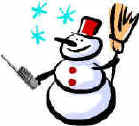Welcome to Handiham World.
Happy New Year
We will close on Wednesday afternoon, New Year's Eve for a long New Year's Day holiday. We reopen on Monday, January 5, 2015.
The traditional welcome to the New Year is ARRL Straight Key Night. I'd planned to acquire a straight key, but don't have one yet. If you have trouble sending CW, it can be so frustrating to work a paddle and keyer that you might be tempted to just pick up a microphone instead. A straight key can be the answer for anyone, really. Whether you have a disability that makes using fancy keyers and paddles problematic or you just plain prefer to form the dots and dashes of the Morse Code yourself, it doesn't hurt to have a straight key in your station. If you are a newbie to the code, the straight key is an essential practice tool. It can always serve as a teaching tool later on if you help someone else learn code, and it can always be dusted off for service on Straight Key Night!
If you are not planning to get on CW, there may be some folks welcoming the New Year on IRLP and Echolink. This sort of thing is usually a free-for-all without any direction; just a gathering of whoever wants to show up with no particular topic, time, or net control.
Two things we have come to expect at this time of year are year-end retrospectives and New Year resolutions. We will spare you a long list of happenings about things that you already knew about anyway and we will not badger you about stuff you should do in the upcoming year... except for one thing, and it is this:
Please check your ham shack for safety! Today we will talk about preventing fires.
What got me thinking about safety was the sound of the emergency vehicles rounding the corner in front of our house, heading for a residential fire. This was a few weeks ago, and no one was hurt in the fire, but the damage was profound, between the part of the house that burned and the terrible water damage from the firefighting process.
We work with electricity every day, especially in the ham shack. Fires are rare, but they do happen - usually because something was done wrong and has failed as a result. The basics are to avoid overloading circuits, fuse 12 VDC equipment power cables with the recommended fuse sizes, dress cables carefully, away from sharp metal edges and so that they are not a tripping hazard, keep equipment cabinets in place (especially if they contain high voltage), and make sure that everything is adequately ventilated.
Most of us know all too well that there are never enough AC outlets for all of our gadgets and radio equipment. Yes, you can solve this problem with a few power strips and extension cords, but be careful what you plug into them.




